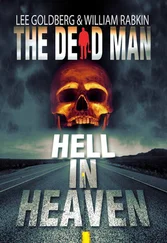My appraisal of the whole situation worsened that afternoon. My friend John Field, who had also been assigned to the Big Red One, and I were told to be at the personnel loading area at 1400 for transportation to our unit. Sitting there expecting a Jeep and driver to pick us up, we were almost choked to death by a cloud of dust raised by a five-ton army cargo truck. When the dust settled, we saw that this five-ton was loaded to the gunnels with dirty, smelly army fatigues. By damn, this was a laundry truck!
Then a soldier in the back end hollered, “Are you the officers going to the 1st Division?” My “yes…” sounded more like a question than a statement. “Well, jump on,” the soldier yelled. “We’re your ride, just as soon as we dump this load of dirty clothes over at the laundry.”
We finally rumbled out of Saigon city and headed north and east on Highway QL1 toward 1st Division forward headquarters at Di An (pronounced zee-on). “This sure isn’t what I expected,” I muttered to myself as Field and I jumped off the laundry truck at Di An. I Was still smarting about a brand-new cavalry officer—breathing fire and itching to get into the war flying scouts—being assigned to an infantry division. Besides, this place didn’t look much like a forward headquarters to me. I didn’t see anything but rear area personnel running around fighting paperwork.
But there were some encouraging signs. Di An was also home base for an air cav troop of the 3d Squadron, 17th Cavalry, 1st Aviation Brigade. Also, squadron headquarters for the 1st Squadron, 4th Cavalry, 1st Aviation Battalion. That meant there were aeroscouts in the squadron’s air cavalry troop!
As I sat talking to the assignment officer at the Di An headquarters hootch, I must admit that my attention was divided. As he talked to me, I nodded my head, but in fact I was looking over his head at the information board on the wall behind him. An organizational chart was posted showing the air units assigned to the 1st Aviation Battalion at Phu Loi, the base where Field and I had been told we were being sent. The chart showed Delta 1/4 Cav—D Troop, 1st Squadron, 4th Cavalry Regiment. That meant a platoon of aeroscouts had to be operating out of Phu Loi. Things were looking up. Maybe the 1st Infantry Division wouldn’t be that bad after all.
As I stared at the wall chart, I realized I had heard about the 4th U.S. Cavalry. At OCS some of its Vietnam exploits had been used as study examples. I remembered that this outfit had been in Vietnam since 1965 and had chalked up quite an impressive combat record. It was one of the first units to prove armor effectiveness in Vietnam’s II Corps tactical zone. No question, 4th Cav was actively showing all the boldness, dash, and aggressiveness that had marked every generation of cavalrymen since 1855, when that regiment had come into being.
Bringing my attention back to the assignment officer, I asked if he had any information on the 4th Cav at Phu Loi.
“That’s the Darkhorse unit. They’re the air cavalry troop for the 1st Division,” he responded.
“How about their scouts?” I shot back.
“Their scout platoon over there is called the Outcasts. They fly the Loaches. The troop’s also got those new Cobra gunships and a platoon of Hueys.”
I heard only what he said about the Loaches—the light observation helicopters, OH-6As. Maybe, just maybe, I thought, I am still alive for flying scouts after all.
The next morning, John and I threw our gear into the back of a Jeep that had been sent down from Phu Loi to get us. We headed north out of Di An toward Highway 13. That highway—really nothing more than a two-lane jungle dirt road—was a well-known north-south artery that I would come to know later as Thunder Road. It wound north through the heart of 1st Division’s assigned operational area.
We passed a lot of Vietnamese villages, nothing more than little knots of dilapidated shacks—hootches, as I would soon be calling them. They stuck up like matchboxes all along the side of the road. Children, cows, and chickens roamed through their living areas. Little kids were everywhere, waving and yelling to us as we passed. Most of them were wearing at least one or two articles of somehow-garnered American GI clothing—a bush hat, jungle boots, or maybe a khaki T-shirt. After about half an hour’s ride, we pulled into the main gate at Phu Loi. An MP with an M-16 rifle looked up from the long line of Vietnamese civilians he was checking. Then he nodded to our driver and waved us on.
Field and I looked at each other, puzzled by what the MP was doing. Our driver explained: “ID card check. They’re hootch maids and other civilian workers that work here on post. They arrive in the morning and then leave right at the stroke of 1600. You’d think they belonged to a labor union or something the way they clear out of here right at four o’clock.”
The Jeep squealed to a stop at the headquarters building, 1st Aviation Battalion, and the driver ushered us in to the executive officer. “Two new pilots for you, sir,” said the driver. Then he got back in his Jeep and sped off.
“You men have a seat,” the XO said. “The Old Man is tied up right now, but he’ll see you in a minute.”
Four or five clerks were sitting around pounding typewriters, and somewhere down at the other end of the room we heard a radio playing rock music. We were amazed—it sure didn’t seem as though we were in the middle of a war.
Obviously amused at the just-in-country, newbie look on our faces, one of the clerks finally volunteered, “That’s AFVN, Armed Forces Vietnam Radio, down in Saigon. Pretty good stuff, huh?”
Before either one of us could mumble an acknowledgment, the executive officer reappeared at the door of the battalion commander’s office and waved us in.
Once inside, we snapped to attention, came to smart salutes, and, in our best military manner, said, “Sir, Lieutenants Mills and Field reporting to the commander for duty.”
The lieutenant colonel returned our salutes and walked around his desk to shake hands and offer us a seat. “On behalf of the 1st Division,” he said, “welcome to Vietnam.”
“Thank you, sir,” we replied, almost in unison.
He sat back down at his desk, picked up our personnel jackets, and gave them a quick look. “You men have come to a good outfit. You both fly Hueys, I see.”
We both nodded, but I was still hoping he would pick up on my prior request for scouts and OH-6s.
He asked us some general background questions and quickly scribbled something in his notebook. “Lieutenant Field, you’re an infantry officer, so I’m going to assign you to the 1st Aviation Battalion. You’ll go to A Company and fly in our lift unit, the Bulldogs. It supports the entire division.” I could tell that John was happy with his assignment.
“Lieutenant Mills,” he said after a moment, “because you’re an armor officer, I’m going to send you across the runway to D Troop, 1st Squadron, 4th Cavalry.”
I couldn’t hide the smile that cut across my face as he continued. “D Troop operates as part of the division cavalry squadron, but it is actually detached from the squadron and attached to the 1 st Aviation Battalion over here for support and administration.
“Being an armor officer,” he went on, “you really belong in an air cavalry reconnaissance outfit… and I understand they have some pilot vacancies over there where you can put your qualifications to work right away.”
Damn, I thought. Things are falling into place! I fairly well floated out of the battalion commander’s office, thinking that I had just beaten the odds. Going to the 1st Infantry Division was going to be OK after all!
John and I said our good-byes and headed off on our own. A Jeep from the “Quarter Cav” picked me up, and on the way over to the troop the driver gave me a little background on the airfield. “This basic northsouth runway here at Phu Loi was actually built by the Japanese. They used it as a fighter strip during World War II. Ain’t that somethin’, sir?” He grinned. “Way back in World War II.”
Читать дальше












